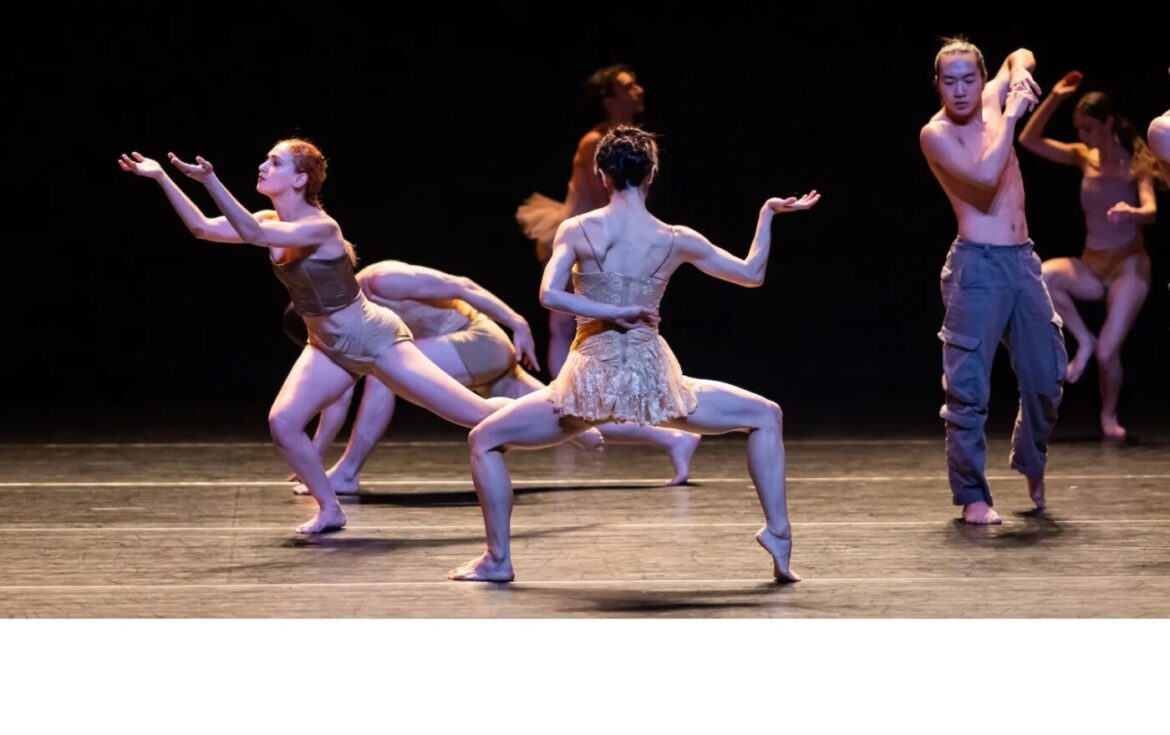Ohad Naharin, house choreographer of Batsheva Dance Company, the acclaimed Israeli troupe, says his main inspiration comes from being in the same room with the dancers and then the research, discovery and sharing that follow.
Naharin’s intimate approach will be on display in “MOMO,” which makes its delayed Bay Area premiere this weekend in Cal Performances’ Zellerbach Hall after the company’s 2024 U.S. spring tour was postponed in the wake of divisiveness over the Gaza War.
“I started by creating for myself a clear set of codes and a sort of playground for the work,” Naharin explains. “Then I let ideas visit me for awhile before I go to the studio. This preparation helped me to create the springboard into the process with the dancers. I basically created two separate works and then brought them together to become one. This helps me and the dancers to arrive at the end of the process to places I did not know exist.”

In “MOMO,” the separate works consist of four men embodying masculinity through slow, methodically smooth moves that ground the work, and two sets of seven men and women who represent a search for individuality with more fluid movement.
“The work is in an ongoing process—constant changes, modified, erasing and rewriting,” Naharin says. “It’s the heart of dance in that it disappears after each show and can reappear different.”
Based in Tel Aviv, The Batsheva Dance Company was founded in 1964 by the Baroness Batsheva de Rothschild, with American choreography pioneer Martha Graham as its artistic consultant. Born in 1952, Naharin danced with the troupe at age 22 before going on to become its artistic director in 1990, a post he held until 2018.
Naharin cites American educator and choreographer Gina Buntz, a 1960s-era collaborator who taught him important shortcuts, as an important professional influence.
Heading Batsheva, Naharin developed his signature movement language, called Gaga. He describes the lively style—notable for the flexibility of limbs and spines, bursts of attack and ground movement—as, among other things, a “toolbox.”
“Gaga helps the dancers to translate and interpret my work,” he says. “They use it to go beyond their familiar limits on a daily basis. It brings in them their beauty, vulnerability, sensuality, mystery, speed, explosiveness, efficiency and clarity. It helps us discover our range.”
Dancers appearing in “MOMO” include Eri Nakamura, Naharin’s wife, who also designed costumes for the piece. The lighting design by Avi Yona Bueno (aka Bambi), and the set and props by Gadi Tzachor enhance the dance’s atmosphere and mood.
“… I like to create what I call the right tension between all the elements … so the process is integrated into the time spent long before the premiere,” Naharin says. “There is always a narrative that comes from the dancers, from the lights, from the costumes and from the set that I did not write, and it has great importance for how I experience the work.”
“MOMO” is set to recordings by Laurie Anderson, the Kronos Quartet’s “Landfall” and Philip Glass’ “Metamorphosis Two,” along with a song/prayer by Venezuelan musician Arca.
“I looked for music that created atmosphere, that has an original voice behind it; beauty, minimalistic, yet evoking strong feelings,” Narahin says.
Moving forward, Naharin’s goals for himself and the company reach beyond the stage: “I am invested in the research and the sharing of it,” he says. “I am also trying to keep trusting in the impact of art and movement in the face of the cruelty, abuse of power, extreme nationalistic sentiments, and ignorance in our region and all over the world knowing that the quality of our actions now will determine the quality of our future.”
Cal Performances presents Batsheva Dance Company in “MOMO” at 8 p.m. Feb. 22 and 3 p.m. Feb. 23 in Zellerbach Hall, near Bancroft Way and Dana Street on the University of California, Berkeley campus. Tickets are $37 to $125 at (510) 842-9988 or calpeformances.org.
The post Ohad Naharin shares inspiration for Batsheva Dance’s ‘MOMO’ onstage this week in Berkeley appeared first on Local News Matters.
